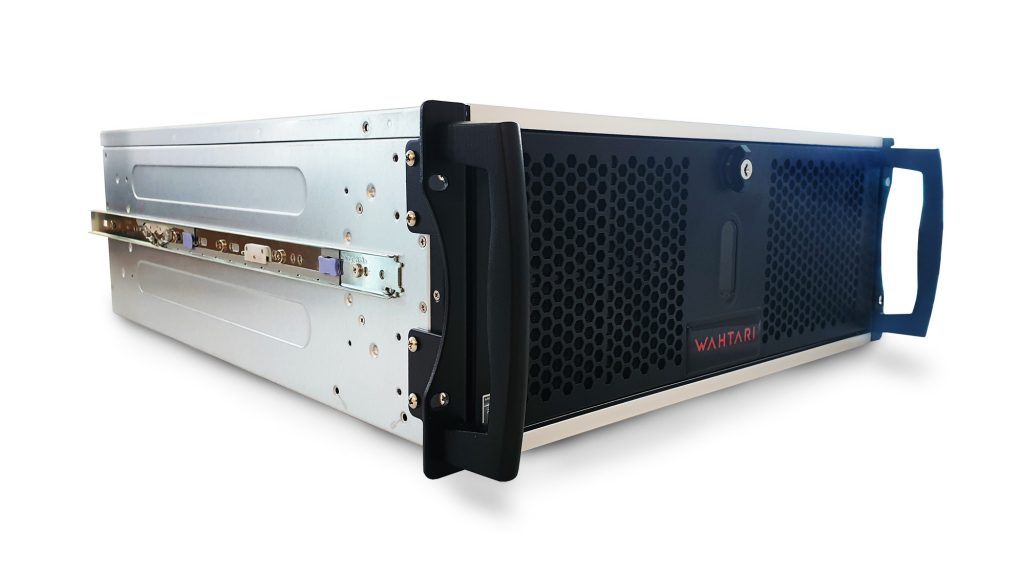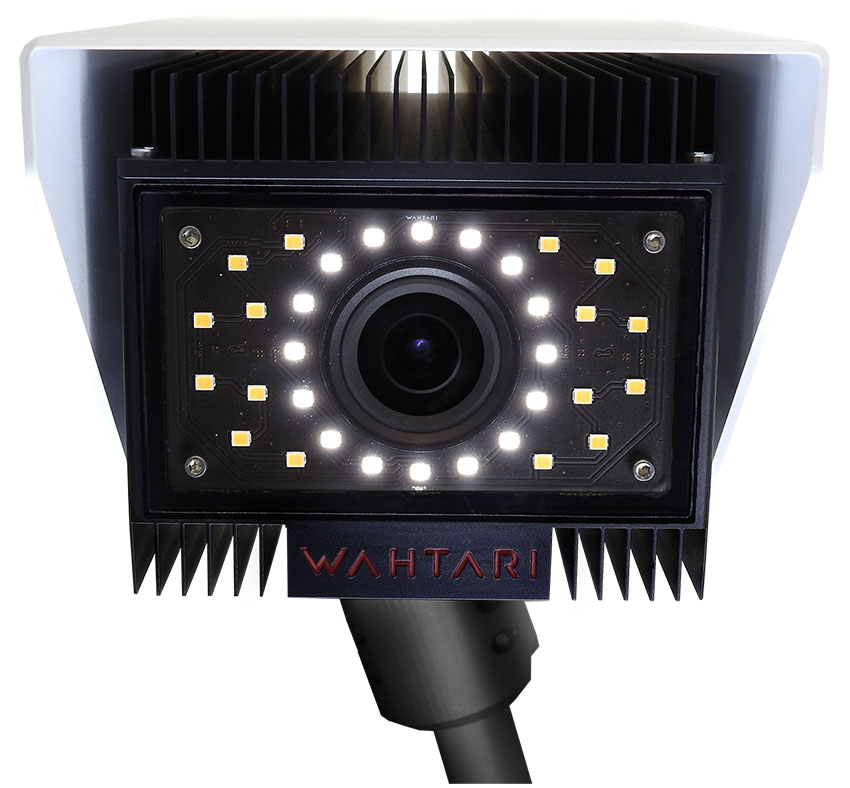Wahtari, founded in 2019 and based in Munich, is a solution provider for computer vision. Specializing in software development and IT security, they offer a modular hard and software platform around AI-based image recognition systems.
The company’s end-to-end solutions– e.g. the out-of-the-box AI-powered Wahtari nCam – supports cross-industry quality assurance and automation tasks.
Wahtari’s hard- and software platform makes it easy to develop your own smart vision solutions.
Easy Engineering: Tell us about your ranges of products.
WAHTARI: Exemplary all-in-one-solutions for industry:
- Wahtari neural Cam (nCam for short) – The open architecture of the nCam offers free choice between different image sensors, motorized or fixed lenses, switchable or fixed IR filters, accelerator chips from Intel (Myriad X) or NVIDIA (e.g. Jetson Nano, Xavier NX), integrated or add-on illumination, as well as housings and mounts adaptable to location and application. The associated software system creates countless customization options, from direct hardware access, to implementing your own Apps via Docker and control via graphical user interface.
- nBox – nBox is the perfect basis for the realization of own Edge-AI solutions with e.g. multiple cameras. Available in two different versions, the nBox Ti is the right choice for demanding computing tasks and the training of AI models. The nBox i, on the other hand, is a compact gateway for field installation. Standardized interfaces like USB 3.1 Gen1 Vision or GigE Vision or Wahtari specific interfaces (nGin) allow easy integration into your system. Exemplary tools from the platform for developing customized AI solutions:
- nGin – As an intelligent engine for edge devices, the nGin SDK simplifies addressing nCam functions and enables hybrid execution of image processing algorithms and CNN, regardless of the target hardware platform.
- nLab – The soon-to-be-public-available deep learning platform nLab provides a comprehensive toolbox for AI model development. With its clear user interface and AI-powered automated operations, it is a powerful tool for any organization that wants to take charge of its own AI models.
E.E: What special characteristics do your products have?
WAHTARI: Our products unite state-of-the-art technologies (AI on the edge, deep learning, end to end encryption) with an open architecture concept:
- First, our innovative AI technology enables problem solving on a new level: Tasks that were not possible with conventional algorithms, or only with immense effort and resources, can now be solved using artificial intelligence. Target parameters – for example in quality control – can be quickly trained using a few good examples. The AI can thus also easily adapt to new tasks.
- Second, all hardware and software components are modular. They can be flexibly assembled and easily combined with third-party components. Numerous interfaces and industry standards, such as OPC UA, ensure easy integration – even during operation. Our optional software libraries facilitate programming.

E.E: In what kind of projects are they used?
WAHTARI: Our products open up the entire spectrum of optical inspection: from quality control to quality assurance, traffic monitoring, safety management and much more.
The nCam, for example, can be easily and quickly trained for a wide range of tasks, e.g. object recognition, surface inspection, pattern, color and text recognition or completeness control. Anomalies or errors are detected in-line of the process and can thus be corrected at an early stage of the production.
The application areas of our AI technology are cross-industry and include e.g. automotive, pharmaceutical, printing & packaging, industrial automation, retail, logistics & transportation traffic management, PPE, production analysis, semiconductor electronics, cable production, wood industry, agriculture and many more.
E.E: How do your products differ from others?
WAHTARI: The complete image processing and evaluation runs on-the-edge if desired, so there is no loss of speed, security or connectivity.
Finally, we have a strong focus on IT security. Our software is based on the latest programming languages and communication is designed to be particularly secure.
This way, customers can be sure that their data is protected from third parties. On request, we can remotely access our devices, enabling remote maintenance and updates.
E.E: How are they used by your clients?
WAHTARI: Our customers use the nCam for optical inspection in quality control and quality assurance, for example. This allows production faults to be detected and eliminated at an early stage. In addition, our nCam supports traffic monitoring and analytics.

E.E: What kind of problems do your clients face on the job site?
WAHTARI: A wide variety of problems arise during optical inspection. Here are some examples from our experience:
a) Cable analysis is about detecting defects on cable surfaces. There are several challenges here:
One is high-speed production: production lines can reach speeds between 500 m/min and 1500 m/min. In addition, applications need to respond faster, which means higher latency and more rejects.
Secondly, cables are produced in a wide variety of colors and often in multiple colors. A particular problem here is that cables rotate around their own axis during production. That is difficult, especially with multicolors. Therefore, defect detection must be 360°.
With traditional programming, these huge error spectra could not be handled, because every situation has to be considered specifically. This means huge code bases that are difficult to maintain and extend, and vast amounts of time and money.
Finally, many production systems cool cables with water. Water drops on the surface do not disturbe our detection algorithms.
b) In paper processing, the problem arises that tree trunks must be debarked to a large extent before processing.
This is because processing too much bark deteriorates paper quality. But if too much bark is removed, valuable raw material is wasted.
E.E: How do your products help them overcome these problems?
WAHTARI:
a) Wahtari has combined traditional computer vision techniques with the latest AI technologies and revolutionized the field of inline inspection:
Our nLine cable inspection solution enables inline quality inspection on the edge. The three integrated cameras enable a full 360° inspection. nLine can be easily integrated into existing production lines and detects discoloration, deformation, surface damage, text (OCR) or wrong diameters – all with the highest throughput times at lowest latencies.
b) In residual bark detection, our nCam detects whether and how much bark is still on the tree trunks after removal.
If there is too much bark on a log, it communicates this to a robot. This then pushes it off the conveyor belt so that it is not used for paper production, but is debarked again.

E.E: Tell us about the future improvement of your products?
WAHTARI: In addition to up to three integrated Intel Movidius Myriad X VPUs and a CPU based on the Intel x86_64 architecture, our nCam now also supports processors from NVIDIA. This offer even more performance and memory for the most demanding tasks.
nOS, the IoT-optimized operating system, is not only designed for addressing machine vision devices. Rather, its ease of use, security features and remote maintenance capability provide an operating system base beyond the machine vision sector for other IoT applications as well.
The extensive Wahtari ecosystem is continuously expanding and will continue to provide compact and functional tools for smart vision ideas. The next projects are the Wahtari nCam mini and nSpect PCB, an automated solution for optical PCB inspection.
E.E: Is there a special project that your products were used in?
WAHTARI: With our all-in-one solutions we have successfully realized various projects, e.g. the analysis of cable surfaces in cable production, the detection of residual bark on tree trunks for the paper industry, the quality assurance of FFP2 masks in the course of the Corona crisis and the high-speed recognition of license plates in the context of traffic monitoring, and many more.


